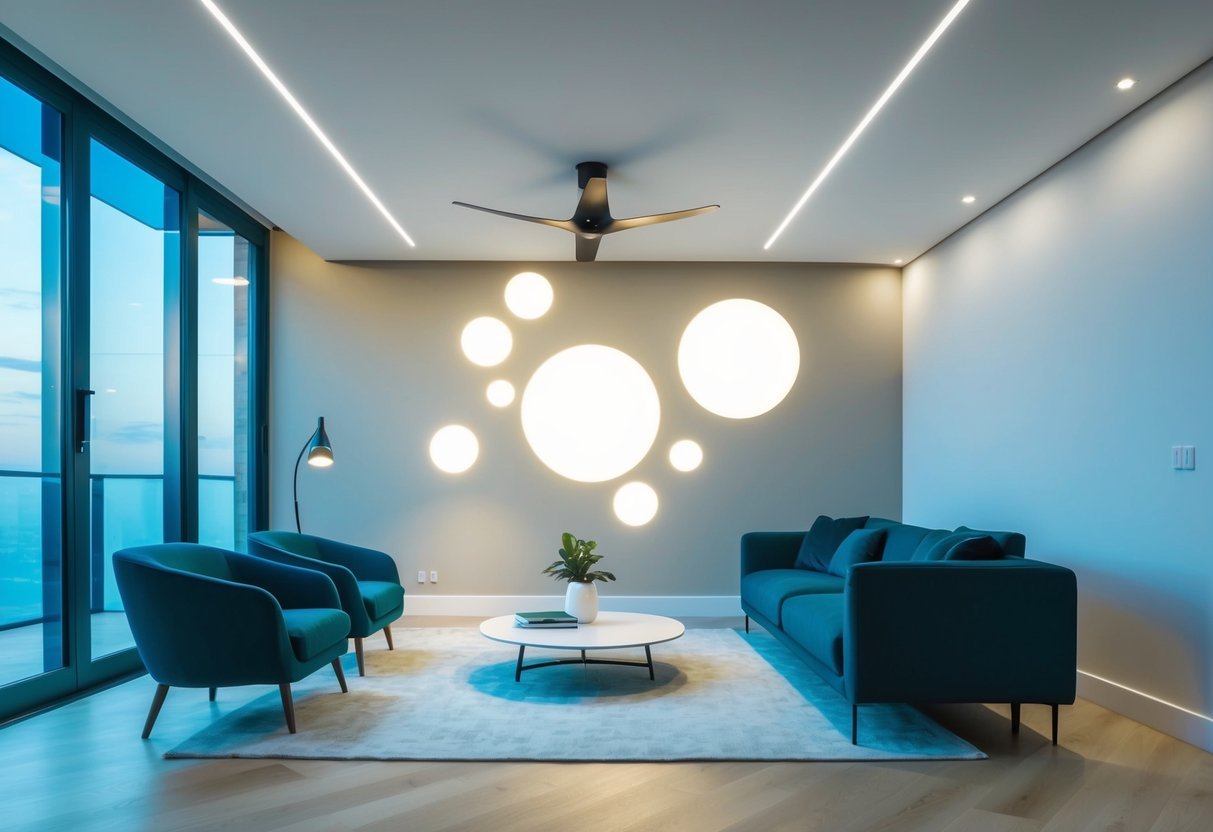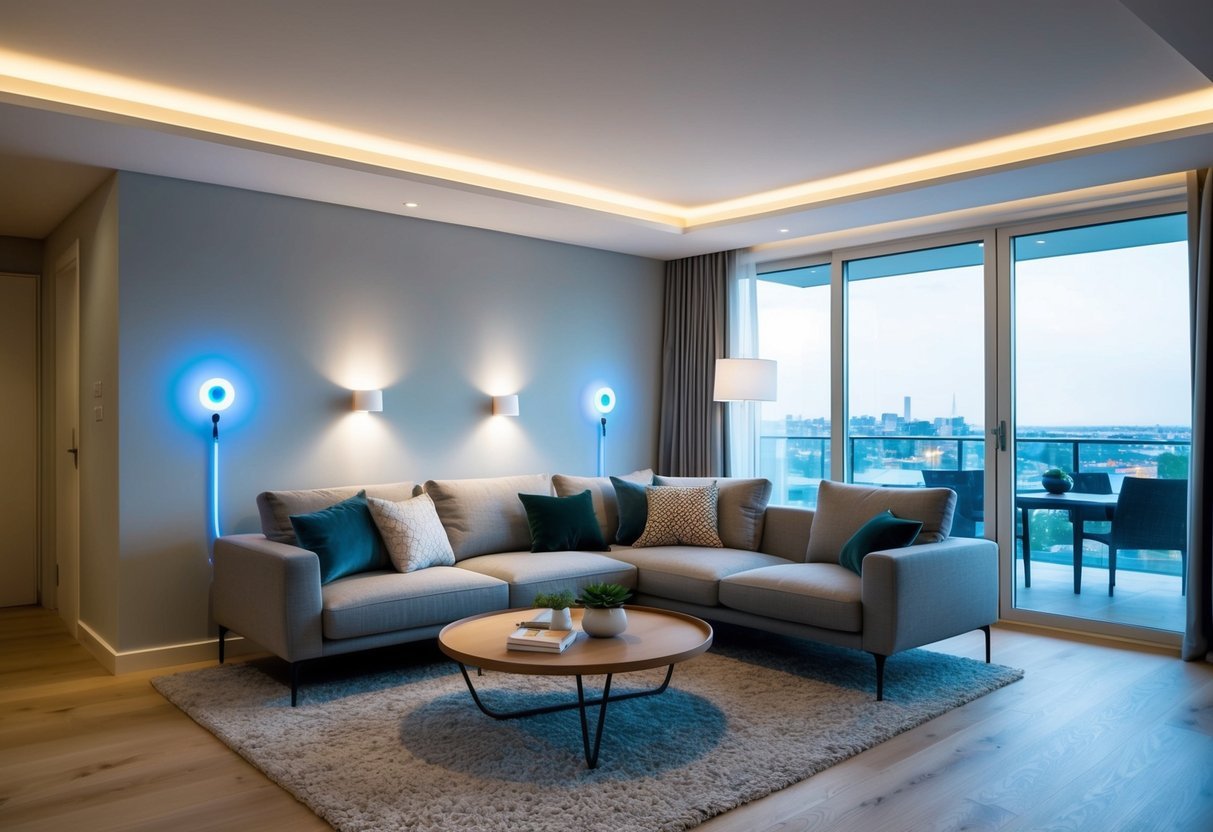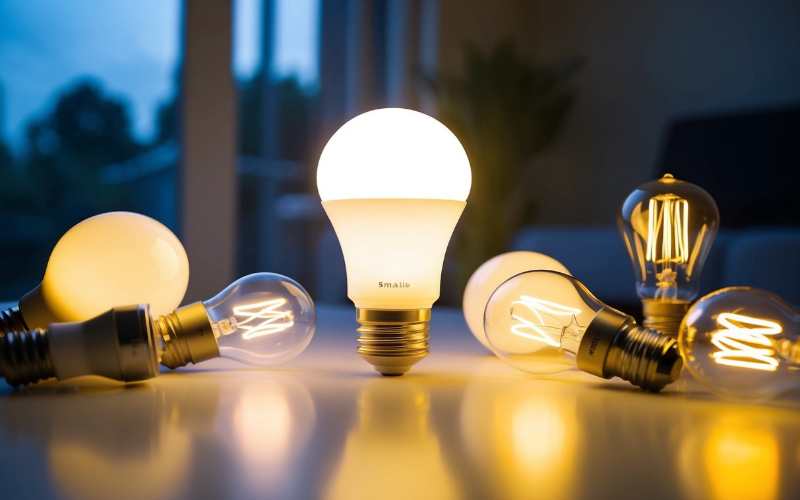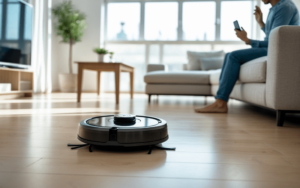As energy costs continue to rise, homeowners are exploring new ways to reduce their bills and increase efficiency.
One popular option is the use of smart lights, which promise both convenience and potential savings.
Smart lights can indeed save money by reducing energy usage compared to traditional incandescent bulbs, making them an attractive choice for many.
Please note that this article contains affiliate links. As an Amazon Associate, we earn from qualifying purchases at no extra cost to you.

These innovative bulbs use advanced technology to optimize their performance, allowing users to control them remotely and schedule their operation based on daily habits.
This control minimizes unnecessary energy consumption and contributes to a more efficient household setup.
Beyond energy savings, smart lights can also enhance security and mood with their customizable features.
Investing in smart bulbs also helps reduce a home’s environmental footprint. By requiring less energy, they contribute to lower carbon emissions, aligning with eco-friendly living goals.
For those considering an upgrade, smart lighting solutions represent a practical step towards cost savings and sustainability.
Understanding Smart Lights
Smart lights represent an innovative approach to home lighting, providing both energy efficiency and convenience.
They offer advanced features such as remote control and customizable lighting, helping reduce energy costs and improving user experience.
What Are Smart Lights?
Smart lights are advanced lighting solutions that integrate with home automation systems.
These lights can be controlled remotely via smartphones, tablets, or smart home hubs.
Unlike traditional bulbs, they provide functionalities like dimming and color changes without additional wiring.
Equipped with Wi-Fi or Bluetooth technology, smart lights can be programmed to operate on schedules, reducing energy wastage by ensuring lights are only on when needed.
Their energy-efficient design often includes LEDs, which consume less power and have a longer lifespan compared to traditional bulbs.
Over time, the initial higher cost of smart lights can be offset by savings on electricity bills and replacement costs.
How Do Smart Lights Work?
Smart lights function through a combination of hardware and software.
The bulbs are typically embedded with a wireless communication protocol such as Zigbee, Z-Wave, or Wi-Fi, enabling connectivity to smart home networks.
Users can control these lights via mobile apps or voice commands through smart speakers like Amazon Alexa or Google Assistant.
These lights offer features like scheduling and automation, allowing users to set specific times for lights to turn on or off.
Some models integrate with sensors to adjust lighting based on ambient conditions.
This adaptability not only enhances convenience but also optimizes energy usage, contributing to overall electricity savings for the household.
The ability to customize and automate reduces manual interaction, making smart lights an attractive option for modern homes.
Assessing Cost Savings
Smart lights can initially seem like a costly investment, but their ability to significantly cut energy consumption promises notable financial savings over time.
Initial Investment vs. Long-Term Savings
The initial cost of smart lighting systems often includes purchasing smart bulbs or fixtures, along with potential installation fees for more complex setups.
Though the starting cost can be higher than that of traditional lighting, smart lights can lead to notable savings in the long run due to their energy efficiency.
Smart lighting systems often possess features such as dimming and motion sensors that adjust lighting automatically based on room occupancy.
These features contribute to reducing electricity usage and can decrease energy bills.
For instance, reductions in energy consumption can offset the initial investment within a few years, making smart lights a cost-effective choice for many households.
Smart technology can integrate with other home systems, offering additional cost savings through comprehensive energy management.
Regular updates and improvements in technology have made smart lighting systems more accessible and affordable, further enhancing their value proposition.
Electricity Consumption Comparison
Smart lighting significantly reduces electricity consumption by optimizing usage based on necessity rather than constant illumination.
For instance, installing smart bulbs or motion-sensor lights can lead to energy savings of up to 75%, as claimed by PacLights.
These savings result from reduced usage during times when lighting is unnecessary.
Modern smart bulbs, especially LED variations, consume substantially less power than traditional incandescent bulbs.
Additional features like smart dimmers enable precise control over brightness, offering further energy savings.
Homeowners can adjust settings to match their specific needs, achieving customized energy efficiency.
Maximizing Efficiency

Smart lights offer significant opportunities for energy savings and cost efficiency. Through advanced features and automation, they provide a more convenient and sustainable way to manage lighting at home or in commercial settings.
We may earn a small commission if you purchase through this link. Thank you for supporting our content!
Optimizing Usage with Automation
Automation is one of the standout features of smart lighting systems, playing a crucial role in energy management.
For example, formulating lighting schedules ensures that lights are active only when needed. This reduces unnecessary energy consumption.
Motion sensors automatically turn lights on and off based on room occupancy, further enhancing energy efficiency by using lighting only when necessary.
These features contribute to significant reductions in electricity bills and carbon footprint.
Energy-Efficient Features of Smart Lights
Smart light bulbs, such as LEDs, are designed to be more energy-efficient compared to traditional incandescent bulbs.
Smart bulbs often have a lower power consumption rate while providing the same level of brightness. Upgrading to LED lighting can make a noticeable impact on energy savings.
Additionally, smart lighting systems allow users to monitor energy usage and adjust settings according to their preferences via smartphone apps.
Features such as dimming capabilities help decrease energy use by adjusting lighting levels to meet specific needs, further contributing to overall cost savings.
Smart Lighting Features that Affect Costs

Smart lighting systems offer various features that can lead to significant cost savings. These features include the ability to adjust light intensity and color, as well as the capacity to monitor and report energy usage.
We may earn a small commission if you purchase through this link. Thank you for supporting our content!
Dimming and Color Adjustment Capabilities
Smart lighting enables users to easily customize the brightness and color of their lights, which can lead to energy savings.
By utilizing dimming capabilities, consumers can reduce electricity consumption, as lower light levels require less energy.
Color adjustment also plays a critical role. Transitioning to warmer tones during the evening can enhance ambiance while consuming less power.
Innovative smart bulbs allow schedules to be set, further optimizing energy use by automatically adjusting based on time or activity.
The implementation of such features helps to lower electricity bills.
Improved control over lighting effects can also contribute to longer bulb life.
Reduced energy strain and custom light settings minimize frequent bulb replacements, offering additional cost benefits.
These capabilities illustrate how smart lighting can be a sustainable and cost-effective solution.
Usage Tracking and Reporting
Smart lighting systems often come equipped with advanced tracking and reporting features.
These capabilities provide detailed insights into energy consumption, allowing homeowners to identify areas of excess use.
By analyzing this data, consumers can make informed decisions to optimize energy savings, potentially leading to a reduction in monthly energy costs.
Accurate reporting can highlight inefficient usage patterns, promoting behavioral changes that result in cost savings.
These systems can also integrate with home automation platforms, enhancing overall energy management.
Such data-driven approaches to lighting enable users to better understand and control their energy expenditures, further illustrating the economic benefits of smart lighting technology.
Calculating the Return on Investment
When considering smart lighting, understanding the return on investment (ROI) can guide financial decisions. The ROI for smart lights involves several key factors: initial cost, energy savings, and maintenance savings.
Initial Cost Versus Savings
Switching to smart lighting requires an upfront investment. It is essential to compare this cost to the ongoing savings these lights can provide.
Smart LEDs often consume significantly less energy, leading to reduced electricity bills over time.
Payback Period
The payback period is a crucial indicator of when the savings will outweigh the initial investment.
By dividing the net cost of the smart lighting system by the annual savings, one can determine the duration in years it takes to recoup the investment. Shorter payback periods indicate a quicker return.
Energy and Maintenance Savings
Smart lighting typically boasts higher energy efficiency.
For example, LED bulbs can cut energy consumption by up to 90%. These systems often require less frequent replacements and repairs, further enhancing savings.
More information about the ROI for LED lighting can underscore their impact on long-term savings.
Smart lighting often includes features such as automation and dimming capabilities, allowing users to optimize their energy use.
These efficiencies contribute to cost reductions, making smart lighting an attractive option for cost-conscious consumers.
Frequently Asked Questions (FAQ)
Smart lighting systems offer various advantages. These include energy efficiency and potential cost savings. This section addresses common queries about the power consumption, lifespan, and possible disadvantages of smart bulbs and smart plugs.
How much power does a smart bulb consume when in standby mode?
Smart bulbs typically consume a small amount of power in standby mode. This generally ranges from 0.2 to 0.5 watts. This minor energy usage occurs when the bulb is connected to a wireless network, even when not actively emitting light.
Compared to traditional bulbs, do smart bulbs use more electricity?
Smart bulbs are more energy-efficient than traditional incandescent bulbs. They use advanced LED technology that requires significantly less electricity to produce the same amount of light. This efficiency can result in lower overall electricity usage despite the slight standby consumption.
Can smart plugs contribute to higher electricity usage?
Smart plugs may slightly increase electricity use, but the increase is minimal. Their primary function is to enhance energy efficiency by allowing users to control the power supply to connected devices, potentially resulting in overall energy savings.
What is the average lifespan of smart bulbs?
The average lifespan of smart bulbs is significantly longer than traditional incandescent bulbs. Most smart bulbs last between 15,000 and 25,000 hours, depending on usage patterns and manufacturer specifications. This longevity contributes to potential long-term savings, as replacements are needed less frequently.
What are the potential disadvantages of using smart lighting systems?
Potential disadvantages of smart lighting systems include initial costs for purchasing smart bulbs and possible cybersecurity risks associated with connected devices. Additionally, users may face compatibility issues with existing lighting fixtures or smart home ecosystems.
How much can smart lighting potentially save in energy costs?
Smart lighting can lead to substantial energy savings. Estimates range from 30% to 80% compared to traditional lighting.
These savings arise from both reduced power consumption and the ability to optimize lighting schedules and usage. This contributes to a decrease in electricity bills.
This article contains affiliate links, which means we may earn a commission if you purchase through our links, at no extra cost to you. As an Amazon Associate, we earn from qualifying purchases. Thank you for supporting our content!




